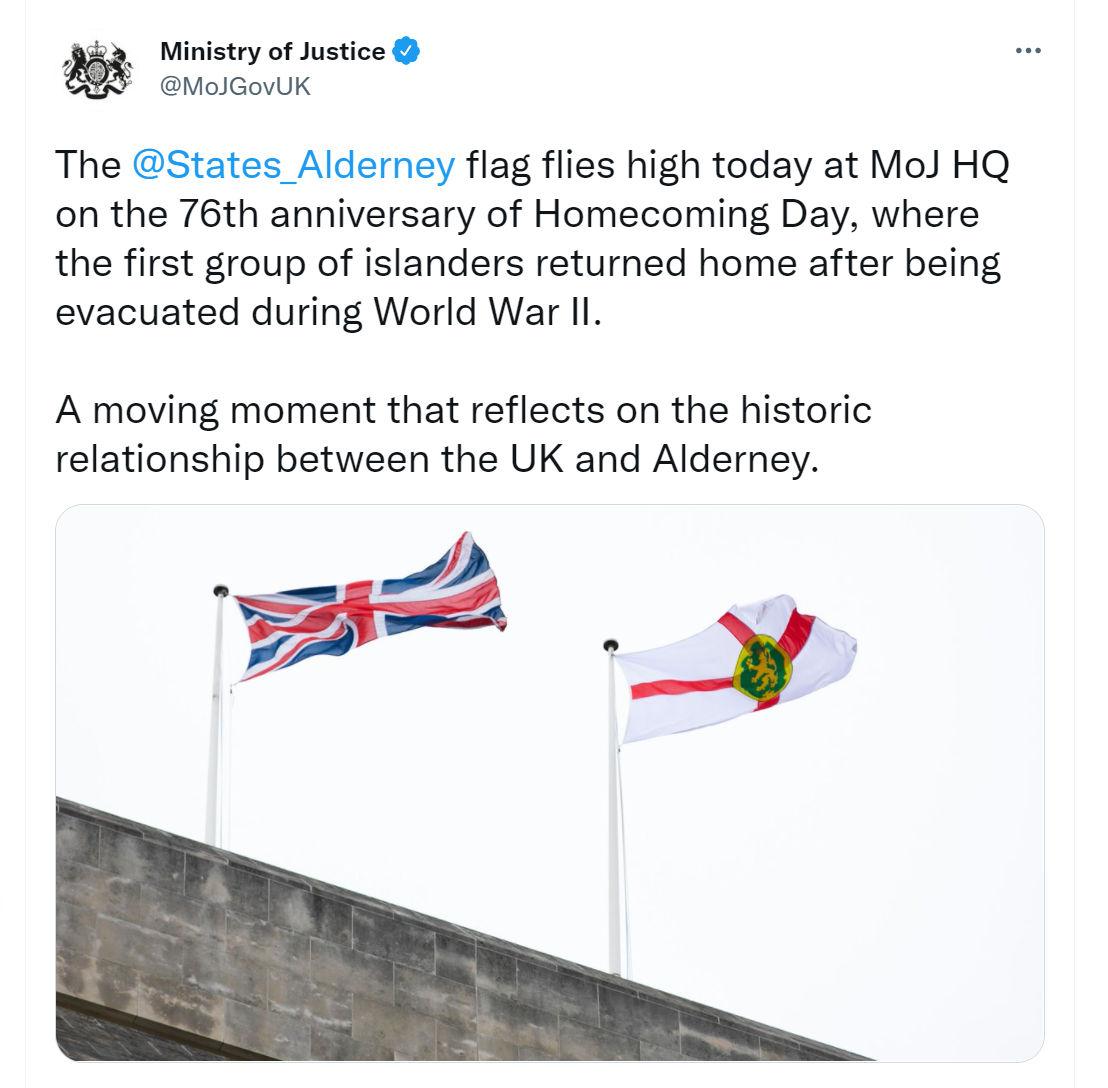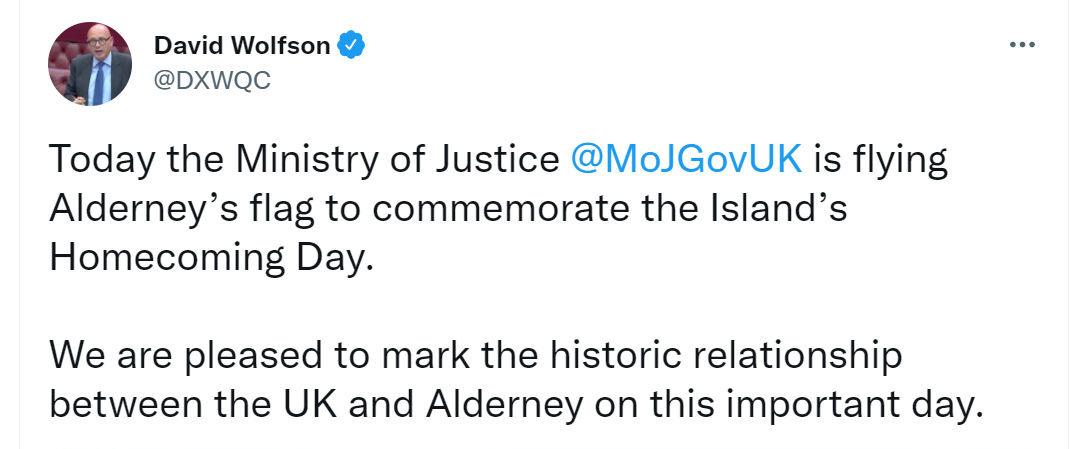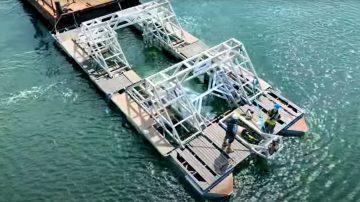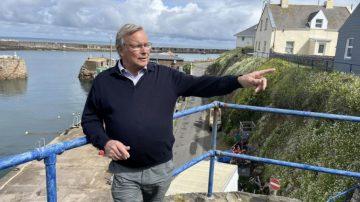The 76th anniversary of the Alderney Homecoming was celebrated in the island and in the UK last week.
Since 2005, December 15th has been an annual public holiday on Alderney, to mark what’s now known as Homecoming Day
Lord Wolfson, UK Government Minister with responsibility for the Crown Dependencies tweeted “Today the Ministry of Justice @MoJGovUK is flying Alderney’s flag to commemorate the Island’s Homecoming Day. We are pleased to mark the historic relationship between the UK and Alderney on this important day.”

The Ministry of Justice tweeted “The @States_Alderney flag flies high today at MoJ HQ on the 76th anniversary of Homecoming Day, where the first group of islanders returned home after being evacuated during World War II. A moving moment that reflects on the historic relationship between the UK and Alderney.”

Alderney President William Tate said: “It is comforting to know that our relationship with the Crown is highly valued and that our important anniversary is highlighted on the 15th of December.”
What is the Alderney Homecoming?
Alderney was evacuated during the Second World War. On 23rd June 1940, the church bells rang to notify residents that six Royal Navy ships that would take 1500 of them to the mainland were approaching Braye Harbour.
The evacuees had just an hour to gather their belongings and assemble, with no way of knowing for sure whether they would ever see the island again.
The Alderney residents were landed at Weymouth, from which most took trains north to Glasgow where they waited out the war. Unfortunately this didn’t put them out of reach of the Luftwaffe, which bombed the city extensively in 1941.
Evacuation wasn’t compulsory – at least at first – and 12 Alderney residents chose to stay behind. However, when the Germans arrived 10 days after the evacuation had begun, those who remained had no choice in the matter. They were shipped across to Guernsey and Alderney became a prison island.
Not everyone chose to return to Alderney, but the first 80 of those who did, travelled overnight from Southampton on a vehicle transporter that had been used during the war. They stepped ashore on 15th December – five years after they’d been sent away and seven months after liberation – and found an island very different to the one they remembered.
Many buildings had been destroyed, and four concentration camps had been built in their place. Although the camps had been demolished before the end of the war, evidence of their existence was still clear. The island was so damaged by the ravages of the conflict that for two years after its residents returned, its only chance of survival was to be run as a communal farm.
With thanks to history.gg
















